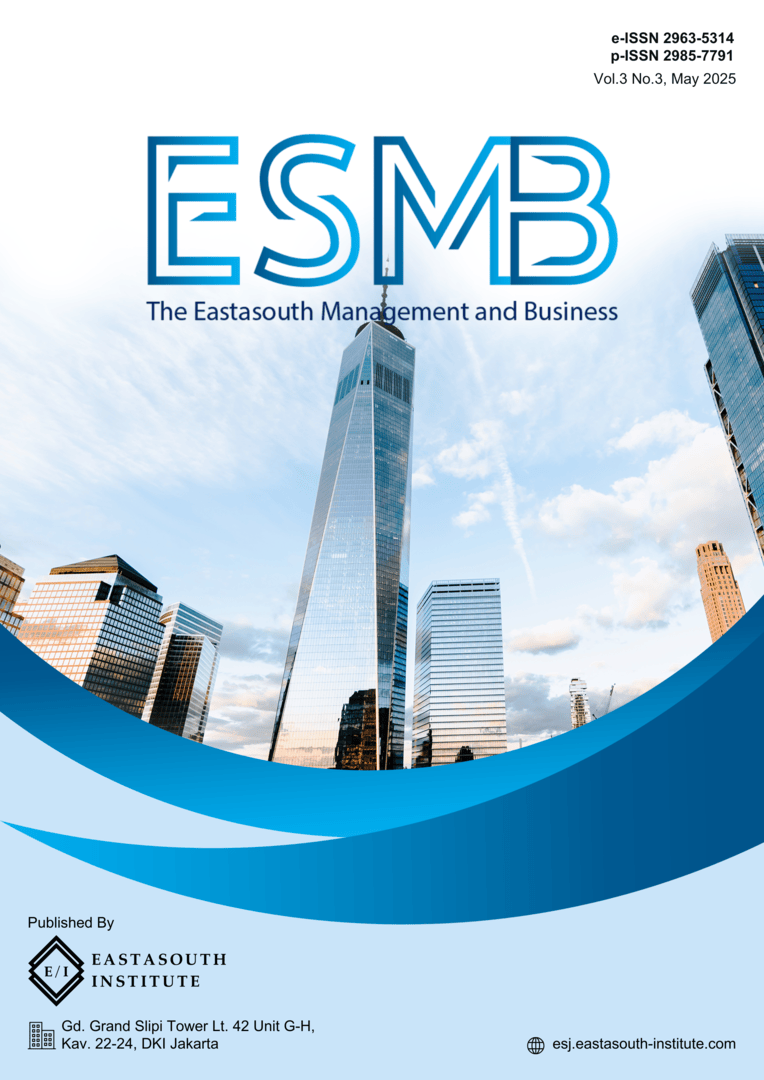Implementation of Customer Journey Mapping in Indonesia’s Tourism Industry to Enhance Tourist Satisfaction
Main Article Content
Abstract
This study explores the implementation of Customer Journey Mapping (CJM) within the Indonesian tourism industry and its impact on enhancing tourist satisfaction. Utilizing qualitative analysis with six key informants representing diverse roles in the industry, the research investigates the level of awareness, challenges, and opportunities associated with CJM practices. The findings reveal that while larger organizations employ CJM to streamline customer experiences, smaller operators face significant barriers such as resource limitations and fragmented collaboration. Key factors influencing tourist satisfaction include accessibility, service quality, and cultural authenticity. The study identifies opportunities for improvement through technology adoption, capacity building, and stakeholder collaboration. These insights underline the potential of CJM as a strategic tool to elevate service delivery, enhance customer satisfaction, and promote sustainable growth in the Indonesian tourism sector.
Article Details

This work is licensed under a Creative Commons Attribution-ShareAlike 4.0 International License.
References
S. B. C. Yuli, “Understanding the dynamics of tourist experience through a qualitative lens: A case study approach in Indonesia,” Glob. Rev. Tour. Soc. Sci., vol. 1, no. 1, pp. 30–40, 2024.
D. P. Ramadhani, A. Alamsyah, M. Y. Febrianta, and L. Z. A. Damayanti, “Exploring tourists’ behavioral patterns in Bali’s top-rated destinations: perception and mobility,” J. Theor. Appl. Electron. Commer. Res., vol. 19, no. 2, pp. 743–773, 2024.
I. B. M. W. Parta and I. A. K. Maharani, “Cultural tourism in Indonesia: systematic literature review,” Vidyottama Sanatana Int. J. Hindu Sci. Relig. Stud., vol. 7, no. 2, pp. 189–204, 2023.
D. Fauzi and P. A. Sumirat, “Evaluation of Indonesian Tourism Marketing towards Quality Tourism,” Int. J. Magistravitae Manag., vol. 1, no. 2, pp. 117–129, 2023.
M. Ridwan et al., “Penerapan Konsep Esensial Geografi Pariwisata Pada Destinasi Raja Ampat,” J. Praksis dan Dedik. Sos., vol. 7, no. 1, pp. 11–25, 2024.
E. Sadeh, F. Asgari, L. Mousavi, and S. Sadeh, “Factors affecting tourist satisfaction and its consequences,” J. basic Appl. Sci. Res., vol. 2, no. 2, pp. 1557–1560, 2012.
T. E. Yudiandri and L. Ningrum, “Kepuasan Pengunjung Destinasi Wisata Pada 3A komponen Produk Wisata Yogyakarta,” Kepariwisataan J. Ilm., vol. 16, no. 1, pp. 18–27, 2022.
A. Richardson, “Using customer journey maps to improve customer experience,” Harv. Bus. Rev., vol. 15, no. 1, pp. 2–5, 2010.
N. I. Okeke, O. A. Alabi, A. N. Igwe, O. C. Ofodile, and C. P.-M. Ewim, “Customer journey mapping framework for SMEs: Enhancing customer satisfaction and business growth,” World J. Adv. Res. Rev., vol. 24, no. 1, pp. 2004–2018, 2024.
A. Scharna, “Die Customer-Journey-Analyse in der Touristik–eine Methode zur Steigerung der Werbeeffizienz und Kundenorientierung,” Kundenorientierung und Kundenservice der Tour. Reisende an allen Touchpoints begeistern und Urlaub zum ganzheitlichen Erlebnis machen, pp. 29–44, 2016.
M. S. Rosenbaum, M. L. Otalora, and G. C. Ramírez, “How to create a realistic customer journey map,” Bus. Horiz., vol. 60, no. 1, pp. 143–150, 2017.
Y. Tueanrat, S. Papagiannidis, and E. Alamanos, “Going on a journey: A review of the customer journey literature,” J. Bus. Res., vol. 125, pp. 336–353, 2021.
D. Hussadintorn Na Ayutthaya and P. Koomsap, “Embedding memorable experience to customer journey,” in Advances in Production Management Systems. Production Management for Data-Driven, Intelligent, Collaborative, and Sustainable Manufacturing: IFIP WG 5.7 International Conference, APMS 2018, Seoul, Korea, August 26-30, 2018, Proceedings, Part I, 2018, pp. 222–229.
Y. Ding, J. M. Lattin, A. M. Buahin, and G. A. Dweck, “A Customer Journey Mapping Approach With Mobile Application,” J. Mech. Des., vol. 147, no. 7, p. 71404, 2025.
I. PURCĂREA and M. P. RAŢIU, “Service quality management as a key for delivering the best tourist experience,” Manag. Mark., vol. 4, no. 4, pp. 71–90, 2009.
M. I. Eraqi, “Tourism services quality (TourServQual) in Egypt: The viewpoints of external and internal customers,” Benchmarking an Int. J., vol. 13, no. 4, pp. 469–492, 2006.
A. Fitri, “Pengaruh Tourist Attraction Dan Service Quality Terhadap Perceived Value Serta Satisfaction (Studi pada wisatawan yang berkunjung pada Desa Wisata Grogol Daerah Istimewa Yogyakarta).” Universitas Pembangunan Nasional Veteran Yogyakarta, 2019.
R. B. Shahrivar, “Factors that influence tourist satisfaction,” J. Travel Tour. Res., vol. 12, no. 1, p. 61, 2012.
M. R. al Sofi, I. A. Hakim, and M. R. Gadoo, “Service quality variables and tourist satisfaction at destination level-A study of J&K Tourism,” Int. J. Appl. Res. Stud., vol. 3, no. 2, pp. 1–9, 2014.
G. N. J. Adinegara, N. W. S. Suprapti, N. N. K. Yasa, and I. P. G. Sukaatmadja, “Factors that influences tourist’s satisfaction and its consequences,” Eur. J. Bus. Manag., vol. 9, no. 8, pp. 39–50, 2017.
D. R. Rachmah, I. C. O. B. P. Iskandar, and P. F. Belgiawan, “Designing a Customer Journey Experience for Income Generation Tourism Industry, Case Study: Dusun Bambu,” Manag. Econ. Rev., vol. 7, no. 3, pp. 392–404, 2022.
R. Rahimi, V. K. Nadda, and H. Wang, “CRM in tourism: Customer relationship management (CRM),” in Digital marketing and consumer engagement: Concepts, methodologies, tools, and applications, IGI Global, 2018, pp. 928–955.

